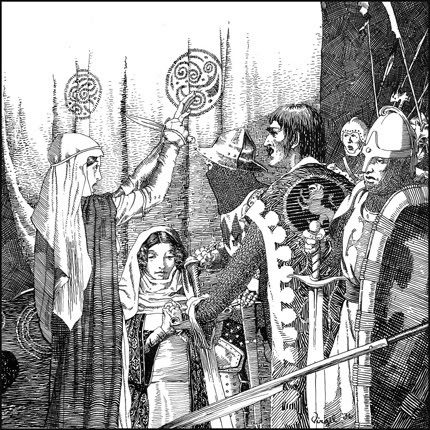howandwhy99
Adventurer
1. Personal and creative DIY character tokens ...and more.
This means somewhere in the rules a material figure or icon is used to represent a character or creature in front of the players. I've found some players really engage once they learn they can paint or draw or sculpt their own character to represent themselves. Maybe they cut it out of a magazine? Maybe they buy and paint a miniature? Maybe they draw on a 1" square of paper and attach to a block like a few players in my game?
Toys are a big part of play (and a great way to create another viable consumer market). Enabling game space to sit down and create a representation of a character (or setting terrain, items, effects, etc.) can create a buy in that pure book reading/consuming cannot. So please retain at core or optional the ability to use your toys and ours to play the game.
2. Consider earlier versions of D&D as setting.
Single book settings sound economically profitable. There is more than enough material in the pre-2E non-campaign setting core books to be a comprehensible setting in and of themselves. This doesn't mean maps of course, but characters and items and histories are all laden through those works. This could go a long way towards swaying early edition groups to become customers again and potential long term buyers.
I don't suggest this be the only setting or that other pre-millennial, traditionally understood campaign settings be republished. Only that artistic works may be best field tested before giving them the green light. Do we want a steampunk D&D setting? An underwater one? Test the waters first. Given the long tail of gamer attachment to D&D I think testing for an "old D&D" setting is a smart plan.
One alternative for the goals of D&D:
- Endlessly puzzling about and expressing into a reality puzzle game via a character.
- Challenging the players to improve their imaginations and memories.
- Engaging in the joy of discovery and invention with other people.
This means somewhere in the rules a material figure or icon is used to represent a character or creature in front of the players. I've found some players really engage once they learn they can paint or draw or sculpt their own character to represent themselves. Maybe they cut it out of a magazine? Maybe they buy and paint a miniature? Maybe they draw on a 1" square of paper and attach to a block like a few players in my game?
Toys are a big part of play (and a great way to create another viable consumer market). Enabling game space to sit down and create a representation of a character (or setting terrain, items, effects, etc.) can create a buy in that pure book reading/consuming cannot. So please retain at core or optional the ability to use your toys and ours to play the game.
2. Consider earlier versions of D&D as setting.
Single book settings sound economically profitable. There is more than enough material in the pre-2E non-campaign setting core books to be a comprehensible setting in and of themselves. This doesn't mean maps of course, but characters and items and histories are all laden through those works. This could go a long way towards swaying early edition groups to become customers again and potential long term buyers.
I don't suggest this be the only setting or that other pre-millennial, traditionally understood campaign settings be republished. Only that artistic works may be best field tested before giving them the green light. Do we want a steampunk D&D setting? An underwater one? Test the waters first. Given the long tail of gamer attachment to D&D I think testing for an "old D&D" setting is a smart plan.
One alternative for the goals of D&D:
- Endlessly puzzling about and expressing into a reality puzzle game via a character.
- Challenging the players to improve their imaginations and memories.
- Engaging in the joy of discovery and invention with other people.
Last edited:












